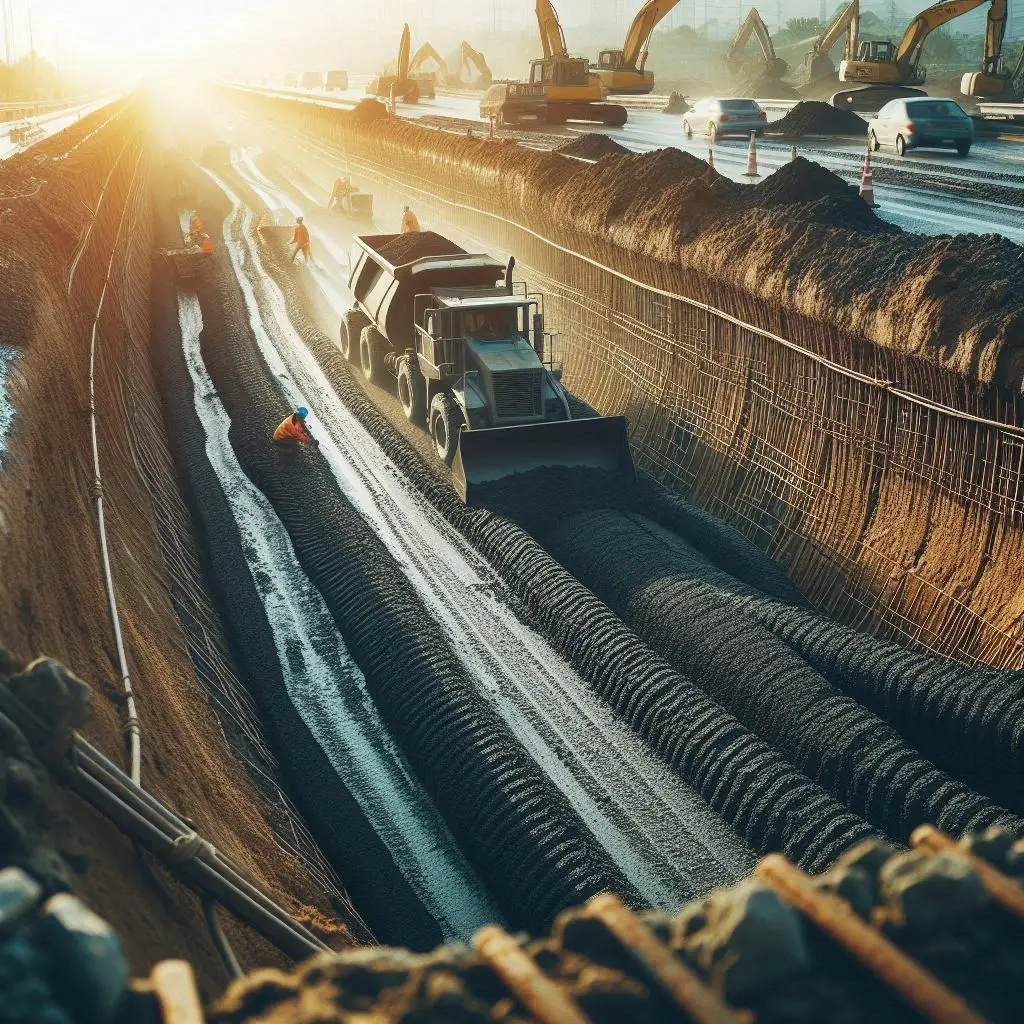
Road Subgrade: What Is It in Road Construction Soil?
Introduction
In the world of road construction, the subgrade is a fundamental element that ensures the stability, strength, and durability of the road. It is the layer of soil or prepared ground beneath the pavement, playing a vital role in distributing the weight of traffic loads and providing a solid foundation for the road. This article explores the importance of subgrade in road construction, how it affects the road's performance, and its relation to bitumen, particularly Bitumen 40/50, which is used in road paving.
What Is Subgrade in Road Construction?
The subgrade is an essential part of the road construction process. It is the natural or prepared soil that serves as the base upon which the pavement is laid. The strength and stability of the subgrade directly influence the longevity of the road. If the subgrade is not properly prepared, it can lead to issues such as cracking, settlement, and deformation of the road surface.
In road construction, the subgrade is often compacted to increase its strength and load-bearing capacity. Proper compaction ensures that the soil can support the weight of traffic without shifting or settling over time. Additionally, adequate drainage within the subgrade is essential to prevent water accumulation, which can weaken the soil and cause road failure.
The Role of Subgrade in Load Distribution
One of the primary functions of the subgrade is to distribute the load of traffic evenly to the layers beneath the road surface. As vehicles travel over the road, the pressure exerted by their weight is transferred to the subgrade. A well-prepared subgrade can efficiently distribute this load, preventing uneven settlement and ensuring the road remains smooth and durable.
The use of Bitumen 40/50, a high-performance grade of bitumen, in road construction can further enhance the road's stability. Bitumen 40/50 is often used in combination with a solid subgrade to create a strong bond between the surface and the foundation. This combination ensures that the road can withstand heavy traffic and adverse weather conditions without compromising its integrity.
Subgrade Soil and Its Impact on Road Performance
The composition and properties of the subgrade soil significantly impact the road's performance. Subgrade soil typically consists of a mixture of sand, clay, silt, and other materials that determine its compaction, load-bearing capacity, and drainage characteristics.
For example, clay soils tend to retain moisture, which can lead to swelling and shrinking, while sandy soils are more permeable but may have a lower load-bearing capacity. Proper testing of subgrade soil is essential to determine its suitability for road construction. Engineers use various techniques, such as soil compaction tests and moisture content analysis, to assess the soil's properties and make necessary adjustments to improve its performance.
Proper Drainage and Moisture Control in Subgrade
Moisture control is a critical aspect of subgrade preparation. Excessive moisture can weaken the subgrade, leading to instability and erosion. On the other hand, insufficient moisture can cause the soil to shrink, leading to cracking and uneven settlement.
To maintain optimal moisture levels, effective drainage systems are implemented in road construction. These systems direct water away from the road surface, preventing water from accumulating in the subgrade. By controlling moisture, the road remains stable, reducing the risk of frost heave in colder climates and ensuring long-term durability.
Subgrade and Bitumen 40/50 in Road Construction
Bitumen 40/50, a commonly used grade of bitumen, plays a crucial role in road construction, especially when combined with a well-prepared subgrade. Bitumen acts as a binder, holding the aggregates together in the asphalt mixture. When used in combination with a stable subgrade, Bitumen 40/50 ensures a strong, flexible, and durable road surface.
Bitumen 40/50 is particularly effective in high-traffic areas and regions with extreme weather conditions. The combination of a properly compacted subgrade and high-quality bitumen ensures the road can withstand the wear and tear of heavy traffic and temperature fluctuations, providing a smooth and resilient driving surface.
Conclusion
In conclusion, the subgrade plays an integral role in the construction of a stable and durable road. It provides the necessary foundation, load-bearing capacity, and drainage for the road surface. Proper preparation of the subgrade, including compaction and moisture control, is essential to avoid road failures and ensure the longevity of the road. When paired with Bitumen 40/50, the subgrade further contributes to a high-performance, long-lasting road surface that can withstand the demands of heavy traffic and harsh weather conditions.
For engineers and contractors, understanding the importance of subgrade preparation and the role of bitumen in road construction is key to creating roads that stand the test of time. By investing in quality subgrade construction, it is possible to build roads that are both resilient and efficient, reducing long-term maintenance costs and ensuring a safe driving experience for all. Moreover, the right combination of subgrade and bitumen ensures that roads remain intact even under extreme conditions, preventing costly repairs and enhancing road safety. Ensuring that both materials work in harmony is crucial for a sustainable and long-lasting infrastructure that benefits society in the long run. This careful attention to detail ensures that roads are not just functional but also built to endure, meeting the growing demands of modern transportation systems.

